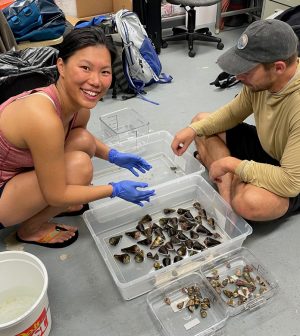- Navigating Your Midlife Crisis: Embracing New Possibilities
- City Raccoons Showing Signs of Domestication
- Mapping the Exposome: Science Broadens Focus to Environmental Disease Triggers
- One Week Less on Social Media Linked to Better Mental Health
- Your Brain Changes in Stages as You Age, Study Finds
- Some Suicide Victims Show No Typical Warning Signs, Study Finds
- ByHeart Formula Faces Lawsuits After Babies Sickened With Botulism
- Switch to Vegan Diet Could Cut Your Greenhouse Gas Emissions in Half
- Regular Bedtime Does Wonders for Blood Pressure
- Dining Alone Could Mean Worse Nutrition for Seniors
A Deadly Sea Snail Could Bring New Hope for People With Diabetes

Toxin from one of the most venomous animals on the planet – a deadly sea snail – could help researchers figure out new ways to treat diabetes and other hormone disorders, a new study suggests.
A toxin in the venom of the geography cone snail mimics a human hormone called somatostatin, which regulates levels of blood sugar and hormones in the body, researchers reported Aug. 20 in the journal Nature Communications.
This snail toxin, called consomatin, could help scientists design better drugs for people with diabetes or hormone disorders, researchers argue.
“Cone snails are just really good chemists,” quipped lead author Ho Yan Yeung, a postdoctoral researcher in biochemistry at the University of Utah.
Consomatin works with another insulin-like toxin in the snail’s venom to produce a rapid and sustained decline in blood sugar levels that renders prey unconscious.
“Venomous animals have, through evolution, fine-tuned venom components to hit a particular target in the prey and disrupt it,” explained senior researcher Helena Safavi, an associate professor of biochemistry at the University of Utah. “If you take one individual component out of the venom mixture and look at how it disrupts normal physiology, that pathway is often really relevant in disease.”
For medicinal chemists, “it’s a bit of a shortcut,” Safavi said in a university news release.
Somatostatin acts like a brake for many processes in the human body, preventing blood sugar and other hormone levels from rising dangerously high.
In snail venom, consomatin serves a similar purpose, preventing blood sugar levels from recovering in prey after the insulin-like toxin has driven them down, researchers said.
But while somatostatin works on several different proteins in human cells, consomatin targets just one protein — which opens the door to more fine-tuned targeting of blood sugar levels, researchers said.
In fact, consomatin appears to be more precisely targeted than current synthetic medications designed to regulate hormone levels, such as drugs that regulate growth hormone, researchers noted.
Consomatin also lasts far longer in the human body than somatostatin, because it contains an unusual amino acid that makes it harder to break down, researchers found.
The geography cone snail is indigenous to the reefs of the Indo-Pacific, grows to about 6 inches in length, and has intricately patterned brown-and-white shells, according to the National Geographic Society.
Consomatin itself likely is too dangerous to use as a drug by itself, researchers said, but its structure could provide clues to new drugs designed to influence human hormone levels.
The fact that multiple parts of the snail’s venom target blood sugar indicates that other of its toxins might also provide useful insights into diabetes treatment, researchers added.
“It means that there might not only be insulin and somatostatin-like toxins in the venom,” Yeung said. “There could potentially be other toxins that have glucose-regulating properties, too.”
More information
The National Geographic Society has more about the geography cone snail.
SOURCE: University of Utah, news release, Aug. 20, 2024
Source: HealthDay
Copyright © 2025 HealthDay. All rights reserved.










